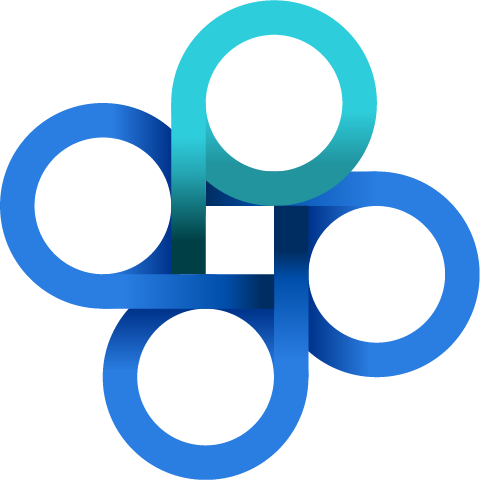5 Ways to Identify and Convert “Self-Educating Buyers”
Many marketers face the continued threat to customer acquisition of the self-educating buyer and its potential impact on their businesses. You could have the best inbound marketing program in the world, but it will likely be ineffective when it comes to influencing this segment of potential customers.
This consumer who conducts his own shopping research and doesn’t seek direct interaction with a representative at a company until he has reached the decision phase of his shopping journey has become the majority of consumers.
Like many marketers, you’ve likely never had a way to identify whether or not a consumer who is a first-time visitor to your website is early in the shopping process, because you’ve had no way to see other touch points they have had across the web. That consumer could actually be a self-educating buyer who has already visited multiple other websites and completed most of his research and is verging on a purchase decision.
The reason self-educating buyers are so problematic to marketers is that if the brand doesn’t identify consumers who have reached the decision-making phase of their buying journey, its window of influence is vastly narrowed, resulting in missed sales. We all know that consumers are searching not just your branded sites, but also your competitor’s sites, as well as third party resources, to self-educate before making a purchase decision. The problem is that we haven’t been able to connect to all those other consumer interactions until recently.
Why You Don’t See Some Consumers
If you’re like most marketers, you rely on consumer data culled solely from your brand’s own web properties, and thus have only a partial view of the consumer journey. In a perfect world, consumers would visit only your brand’s website for all their research and self-education. Since that’s not the case, even if you have the best predictive analytics in place for data gleaned from your own properties, because you’re operating with such an incomplete view of prospective customers, your predictions have large margins of error.
Without a broader understanding of the consumer journey, you are only looking at a myopic view of only theintersectionbetween the consumer journey and your brand. You are looking where you can see instead of looking where the consumers are. When all you see is a few data points, you only a small piece of the overall journey.
Solve the Self-Educating Shopper Challenge with Intent Data
A consumer’s online shopping activities are highly accurate at predicting the stage in which that consumer sits in her buying journey.When you combine authoritative, third party intent data with predictive analytic tools, you solve the problem of self-educating shoppers because you can identify new prospects before they interact with you directly and predict a consumer’s buying journey stage once they have interacted with you.
Uncovering and Converting Self-educating Buyers
There are a number of specific ways that you can leverage behavioral data to detect and convert these shoppers – here are five great examples:
1.) Identifying Self-educating Shoppers Visiting Your Website
Your website sees a variety of inbound traffic each day. But, how do you know if it’s a consumer with true purchase intent or a casual browser? When you can identify disparate events associated with the same consumer, across websites, linked over a period of time and in the order in which they happened, you gain the highest resolution view into that consumer’s journey. And, with this view, you can determine more meaningful ways to connect with these consumers, with the most effective messages at the appropriate times during their buying journeys.
2.) More Effective Audience Targeting
The goal of audience targeting is to focus on the right type of consumer for your business. To do this effectively, means using data from outside your company. By rounding out your brand’s first party data with third party behavioral data, you can better target the right consumers— some of whom you previously viewed as self-educating buyers—and market to them more effectively.
There are third party data sets that help you value media to get a more precise view or ‘predicted value’ of how a click, lead, or call might perform. Additionally, there’s an increasing use of data-driven insights earlier in the consumer journey to identify active buyers at the first signs of competitive shopping, instead of waiting until these shoppers submit a lead.
3.) Enhanced Lead Scoring
A consumer’s shopping behavior should be a key component of any lead score. If you are employing a lead scoring model that doesn’t integrate intent data, you can greatly improve the effectiveness of that scoring that enables you to identify self-educating buyers and prioritize your leads appropriately.
4.) Improving Contact Strategy
Even if you’ve optimized your lead management processes across all of your internal customer data, you can still benefit from third party intent data to help you determine the most effective strategy for certain leads. When you have insights into the level of buying intent of your consumers, you can make more informed decisions about how to work those leads.
5.) Retention Marketing
After you have leveraged third party intent data to convert your self-educating buyers to customers, you can use that same data to grow those customers’ lifetime value (CLV). This data can help you reduce churn by providing indications that your customers have re-entered their shopping journey and can identify when members of your customer base are ripe for cross-sell and upsell opportunities.
The Bottom Line
When you leverage intent data to identify and market to self-educating buyers, you gain the ability to shed light on their complete shopping journeys that you otherwise would only partially see. Whether your consumer visits a competitor’s website, calls a call center, or fills out a web form—when you have that broad view of her journey, you can more strategically segment, prioritize, and nurture her to conversion. Leveraging third-party intent data is also a uniquely powerful way to nurture those consumers into customers with high lifetime value.
Ross Shanken is Founder and CEO at Jornaya.








 Your Privacy Choices for Platform Services | Data Services
Your Privacy Choices for Platform Services | Data Services